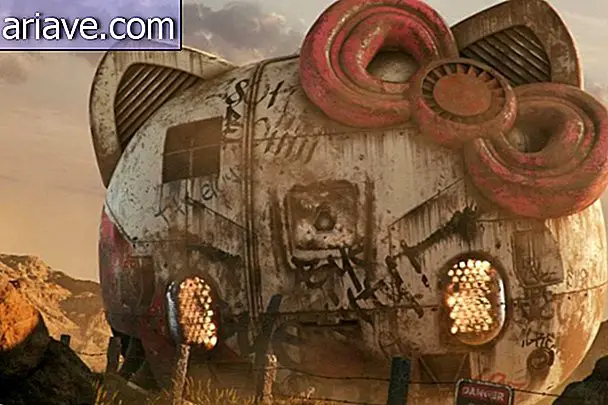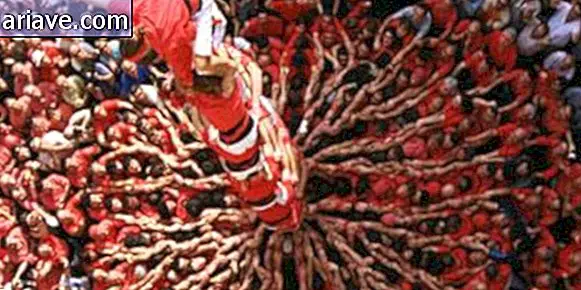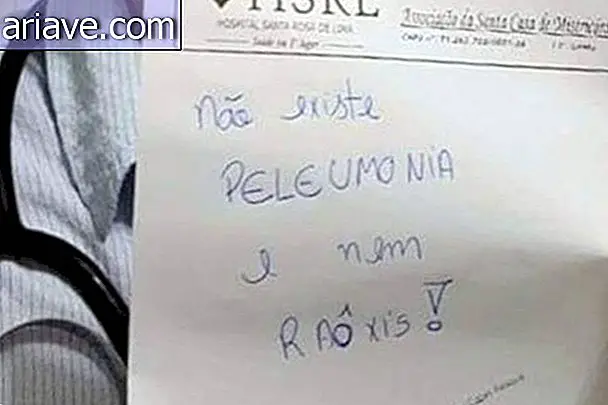Delight of the day: Check out a brief story about creating the Oreo cookie
If there is a stuffed cookie that is a real hit around the world, this is Nabisco Oreo. It is the ideal snack for those moments when that silly little muffin hits, and the most interesting thing is that each fan has his favorite way to taste it: starting with the filling, eating the cookies separately, dipping in the milk, devouring the whole cookie at one time inventing crazy recipes ...

So if you like Oreo, how about knowing a little better the history of its maker and how this cookie was invented?
The Nabisco

According to Matt Blitz of Today I Found Out, it all started in 1890, when eight New York cookie makers decided to come together to build a giant factory and form the New York Biscuit Company. A few years later, this company teamed up with rival American Biscuit & Manufacturing Company to form the National Biscuit Company and, in 1901, the first pack with the corporation's abbreviated name - Nabisco - came into circulation.
The biscuit appeared in 1912, and was part of a trio of crackers introduced by Nabisco in the North American market. However, only Oreo sold well, and the other two varieties - called Veronese Biscuit and Mother Goose Biscuit - were soon gone from the shelves. In fact, the success was respectable, as Nabisco patented the creation a month before the product began to be distributed throughout the country.
At the time, biscuits were marketed as a luxury item in a glass-topped gold can, and each pound of the product (or about 450 grams) cost 30 cents, which today would be just over $ 7 - or approximately $ 18.
But what about Oreo?

According to Matt, before the cookie hit the US markets, a company called “Sunshine Biscuits” was already making a popular cream-filled chocolate chip cookie called Hydrox . So, basically, Oreo came out the same way as many other successful products, that is, from a brilliant idea that was borrowed from a competitor and then made into something better.
Nabisco denies that it drew on its competitor's cookie to create Oreo, of course, but the evidence indicates otherwise. Regarding the name of the cookie, although there is no definitive answer about its invention, there are some very interesting theories.
One would be that because cookies were marketed as a luxury product in a golden tin, the word Oreo would be derived from the French word for the word gold. Another theory is that the letters “O” in the name represent the two cookies, while the others correspond to the cream filling: O -c re am- o .
Speaking of cream ...

According to Matt, until the late 1990s, the cookie filling was made with (not at all "light") lard. After three years of testing, this ingredient has been replaced by partially hydrogenated vegetable shortening - also known as trans fat. Finally, in 2006, Nabisco changed the recipe once again and started to use unhydrogenated vegetable fat in the filling formulation, which, although more expensive, is also healthier.
But as your taste buds know, it's not just fat that Oreo's stuffing is made of! It also has a lot of sugar and vanilla essence, and - just curiously - consists of 29% of the total stuffed cookie. This means that the two chocolate chip cookies account for the remaining 71% of Oreo.
Design

Today the cookie has a lot of embossed drawings on the surface and, in fact, its appearance has not changed many times over the years. According to Matt, the first version of the product simply consisted of the name "Oreo" and a kind of garland across the end of the cookies. In 1924, Nabisco added the word "Sandwich" and, a little later, introduced two small birds and a laurel wreath.
It took about 20 years until the next modification, which left the cookie looking the way we know it today, and the explanations of the possible meaning of the drawings are fantastic. First, look carefully at the image below:

According to Matt, historians believe that the circle surrounding the name "Oreo" crowned with the symbol that appears to form an antenna corresponds to an ancient signal used in Europe to represent quality. There are also those who say that the antenna is actually a Lorraine Cross, which was used to identify the Knights Templar.
The four-leaf clovers that appear around the name would be patina crosses, also associated with knights and masons. A trip! However, Bill Turner, the man who probably created Oreo's design did not belong to Freemasonry, much less was a medieval knight!











